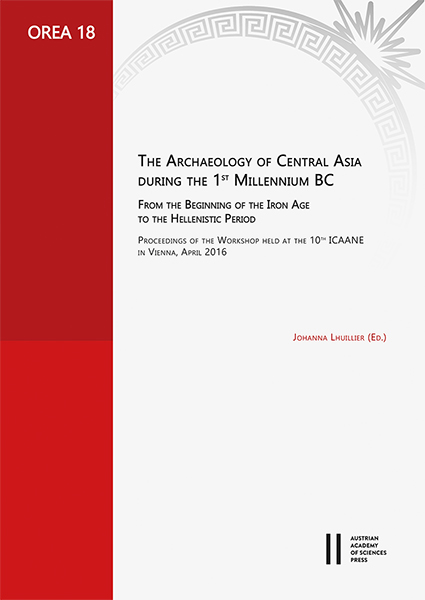
Archaeology of Central Asia during the 1st millennium BC, from the Beginning of the Iron age to the Hellenistic period, pp. 71-88, 2021/12/17
Proceedings from the Workshop held at 10th ICAANE
Despite the recent advancements in our understanding of the socio-political history of the Eastern Iranian polityof Ancient Chorasmia at the height of its historical period, much work has yet to be done regarding its Iron Age andformative stages. The present-day archaeological endeavours in Uzbekistan/Karakalpakstan of the Karakalpak-AustralianExpedition (KAE) and the Angka-kala Archaeological Expedition (AGKE – 2016) have clearly shown thenecessity for a reassessment of the historical framework established long ago by the Soviet ‘Khorezm Expedition’(KhAEE). For instance, the role played by Chorasmia within the history of Zoroastrianism and the active participationof its elite(s) in the cultural milieu of Central Asia at all stages of its history have only recently started to be better understood.Still, the process of acculturation that occurred in Chorasmia from about the second half of the 6th century BC, inconnection with the Achaemenid power in Central Asian, seriously requires additional attention. This paper presents aconcise state of the art concerning the initial development of the Ancient Chorasmian society as a result of its inclusioninto the sphere of influence of the Achaemenids, with focus on the two main sites excavated by the KhAEE relative tothis period: Kyuzeli-gȳr and Dingil’dzhe. In light of the available data, it appears that the indigenous cultures of the‘Southern Pre-Aral’ area during the 6th century BC took a clearly detectable course characterised by material culturalelements intertwined with the Persian politics in Central Asia.
Keywords: Ancient Chorasmia; Central Asia; Achaemenid Empire; state making; Chorasmian Antique 1 pottery; cultural legacy; centralisation